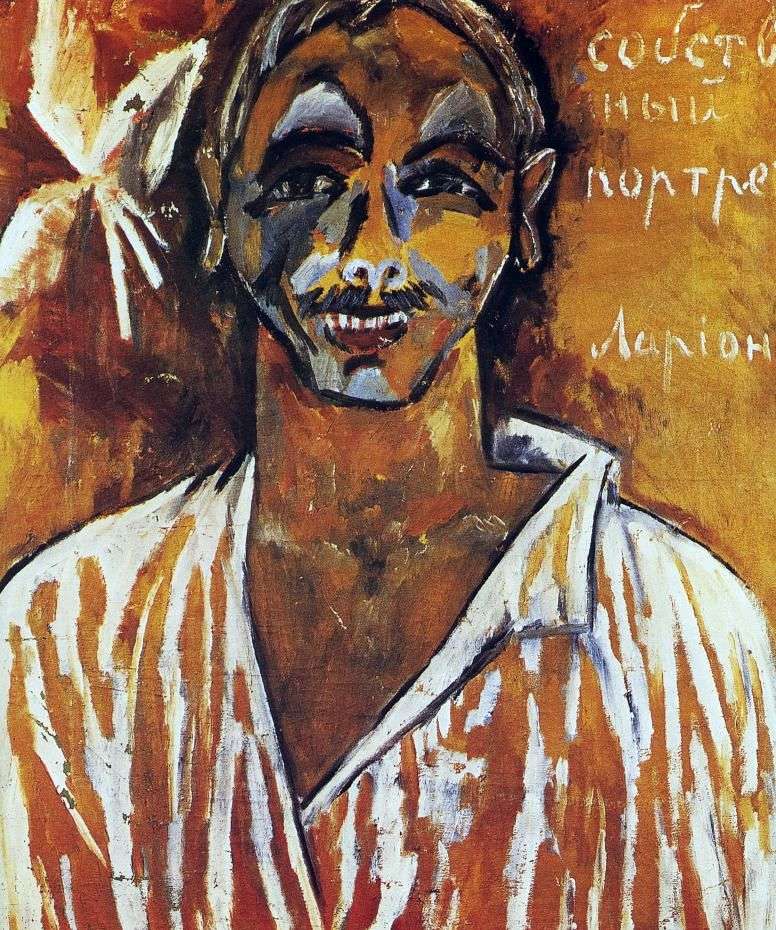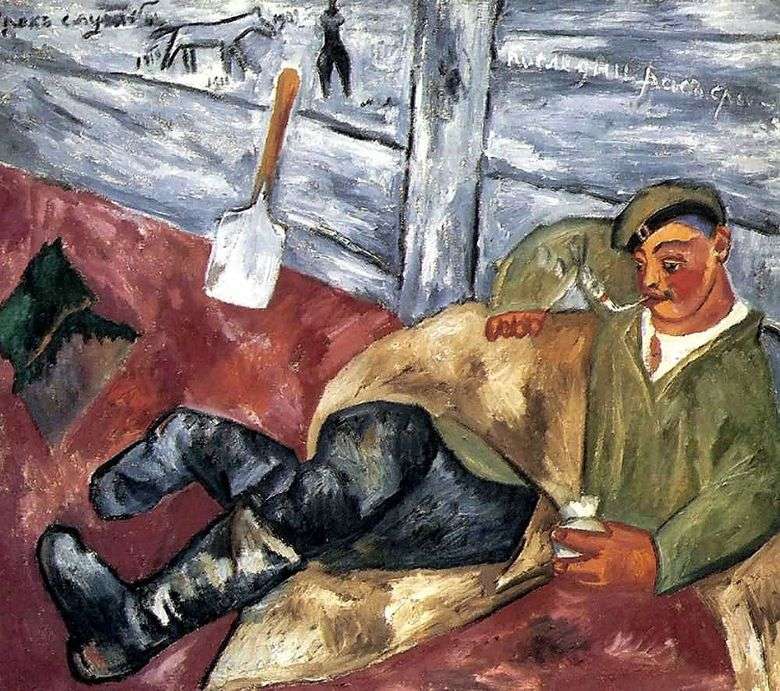
The real primitivism of Larionov begins with the paintings of the Soldier’s Cycle, first exhibited on the Jack of Diamonds in 1910. Here, too, a full-scale line and a line of signs are clearly visible. The works of “Near the camp” and “Morning in the barracks” belong to the natural layer. The “Smoking Soldier” and “The Soldier on Horseback” canvases are the brightest representatives of the signage style of Larion “pure” primitivism.
It is noteworthy that in these canvases Larionov began to directly address the viewer with the help of numerous signatures on his canvases. For example, above the image of a saber, he inscribed “saber”, and above the soldier with an accordion – “soldier”. In one of the paintings he places these signatures on the fence, they seem to be drawn in chalk, in other paintings such inscriptions are drawn directly on the very surface of the canvas and are intended, as on splints or signboards, directly to the public.
Self-portrait Larionov, which he presented at the exhibition “Jack of Diamonds”, was a kind of challenge to the public Larionov. The author himself appeared in front of the audience dressed in the same “jaded mask”, which he wore on his other characters. Larionov could not resist the opportunity to “play on the stage of his canvases.” The artist depicted himself in the image of a soldier-Gaer, a joker and a jovial. The viewer sees a figure in a soldier’s undershirt with a bare neck and a barracks haircut.
Porter’s game aesthetics is perhaps the most distinct: a self-portrait is a defiantly grotesque appeal to the joker crowd, and not only a simple face with a disarming white-toothed smile, but also the author’s inscription made over the soldier’s shoulder: “Larionov’s own portrait”.
 Resting Soldier by Mikhail Larionov
Resting Soldier by Mikhail Larionov Autoportrait (cycle de soldat) – Mikhail Larionov
Autoportrait (cycle de soldat) – Mikhail Larionov Still Life with a Tray and Cancer by Mikhail Larionov
Still Life with a Tray and Cancer by Mikhail Larionov Autorretrato (ciclo del soldado) – Mikhail Larionov
Autorretrato (ciclo del soldado) – Mikhail Larionov Rooster and chicken by Mikhail Larionov
Rooster and chicken by Mikhail Larionov Spring. Seasons (New Primitive) by Mikhail Larionov
Spring. Seasons (New Primitive) by Mikhail Larionov Le soldat au repos – Mikhail Larionov
Le soldat au repos – Mikhail Larionov Soldado en reposo – Mikhail Larionov
Soldado en reposo – Mikhail Larionov